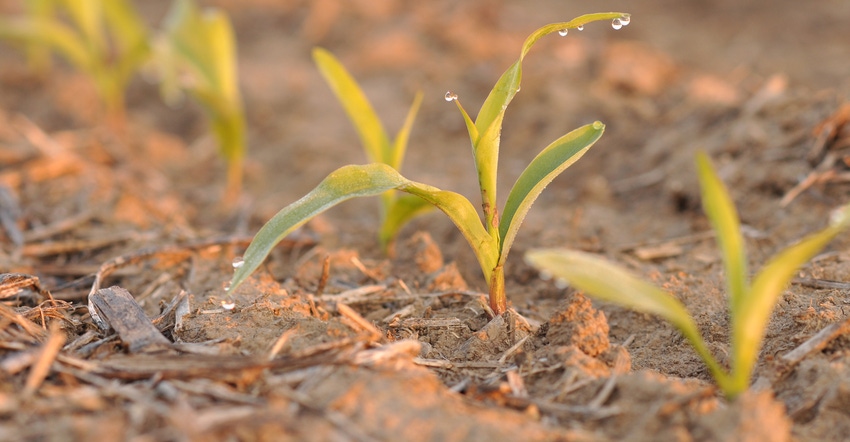March 24, 2017

Say somebody pulls into your driveway. They’ve got a great new product. It’s going to extract fertilizer from your soil, add nutrients you didn’t know you needed, and synergize some stuff. But above all, it will, undoubtedly, increase your yields.
It sounds pretty good. Maybe they didn’t even pull into your drive; instead, they showed up on Twitter or in your email inbox. Their argument is compelling. Their website looks OK.
Will you bite?
The answer to that question comes down to a couple of different factors. One, are they trustworthy? And two, can they prove anything?
Always, the proof is in the data. Karen Corrigan, McGillicuddy Corrigan Agronomics, says if you’re evaluating a new product, look at more than just company data. That means independent, third-party data by a university or someone who doesn’t have a stake in the outcome. If the website only shows testimonials claiming 7 to 20 bushels better? Find real data that shows how frequently the product generated a profitable response. A study can always show a reasonable yield response, but the question is, did that happen one out of 10 times? Or more often?
“If a company does the research, you likely won’t see the full data set. There’s got to be a bad data point in there somewhere,” Corrigan says.
The harm, of course, is that farmers can get snookered into paying extra dollars per acre, at a time when margins are already thin.
It’s a cyclical problem, and not a new one, Corrigan says. “When commodity prices go low, all these frou-frou products come into play. If it sounds too good to be true, it’s probably too good to be true.”
If you spend any time at all on Twitter (Corrigan is @weedgirl24; she’s the one who knows what she’s talking about), you’ll see all sorts of claims. Some products really do what they claim — but they won’t impact your yields if they don’t fix your problem. A product that improves or maintains phosphorus availability will only help if your soil has a problem with phosphorus availability. Generally, that’s not a problem in Illinois.
What else can you do?
Here are some other tips:
• Read the label and do math. If a label says it’s 99.9% aqueous solution, you’re paying for 99.9% water. And if a product doesn’t have a label — or if the company won’t reveal what’s in it — be suspicious. If a product is shipped in the U.S., check the MSDS (material safety data sheet), which lists ingredients.
• Look for certified crop advisers, too. Matt Montgomery, a Burrus Seed agronomist, says 90% of the time, if the information you’re following came from a CCA, it’s good agronomy. Montgomery is a CCA and on Twitter, too: @matt_montgo.
• Avoid the voice in the wilderness — the guy who says, “I��’m the only one with this information.” Evaluate that information carefully, Montgomery says.
• Does the person giving you advice have something to gain? Is he or she trying to sell you something? Private, independent agronomists have farmers who pay them for their expertise for a reason. They don’t have a stake in the advice they give. And just because someone’s selling you something, it doesn’t mean it’s bad advice — but you should compare it to what everyone else is saying.
• If you try a product, include untreated checks on both good and poor ground, and do it on a small scale. Corrigan’s not opposed to trying something new, but figure out whether it worked or not and why.
On campus
In the earlier days of my career here at Prairie Farmer, we spoke with Extension agronomists extensively. Farmers relied on them for unbiased, third-party information. Now that Extension system is a shell of its former self. A few regional agronomists remain, but many have left for commercial work. And at the University of Illinois, after a succession of slashed state budgets that reduced the ability to hire (and replace) applied ag researchers, they’re finally interviewing for a new entomologist and a new plant pathologist.
That’s good news, says Lisa Muirheid Martin, who represents the Illinois CCA board. But those positions are also nontenured, and at this point, they’re only funded for three years — with the hope of finding industry dollars to support them after that. They’re also looking for industry funding to support their research, once they arrive on campus.
The tough part is that those positions have remained vacant for more than a year. Research has slowed down, to a certain degree, due to lack of state funding. And in a lot of ways, that space has created a vacuum for farmers looking for agronomic advice. It can be filled by sketchy salesmen hawking, as Corrigan put it, “frou-frou products.”
But it can also be filled by solid, CCA-certified, research-driven agronomists. They’re out there. You just have to find them.
And as in every profession — farming included — there are good people and there are bad people. Some companies employ really good retail agronomists. Shop around. Talk to your local people. And be sure when they wheel into your driveway — or come across your Twitter feed — they’re offering solid information, based on solid research.
You May Also Like




